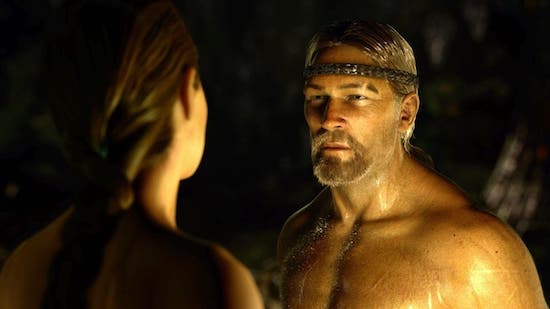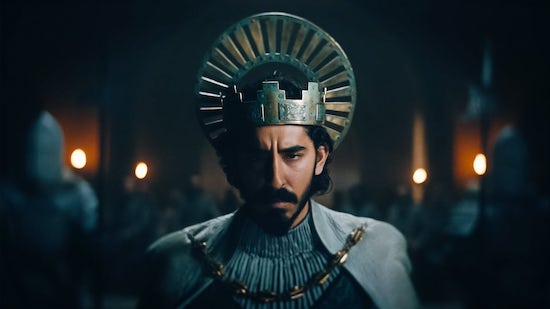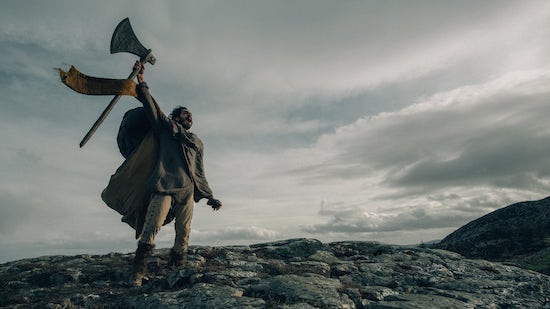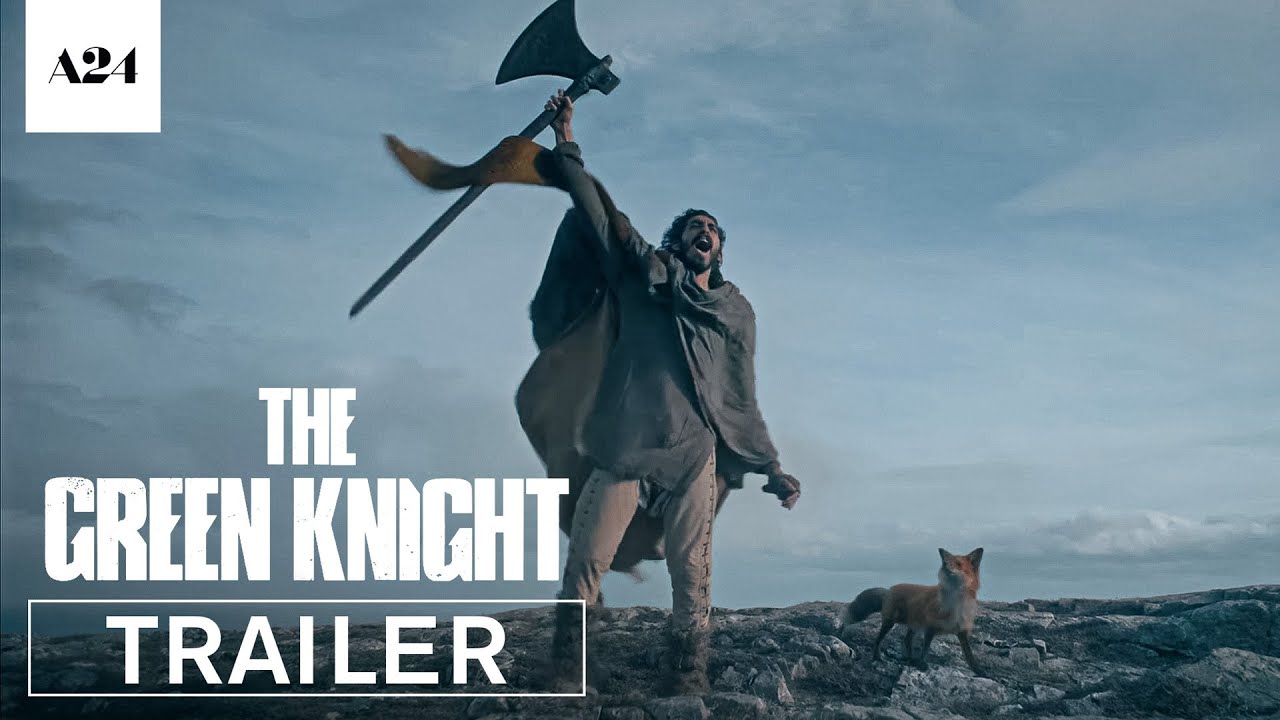Ah, the seventh century. A simpler time. A time when men were free to dismember one another without fear of litigation and the womenfolk kept to their witchy bivouacs, conjuring eldritch monsters as a form of revenge for the bloodshed and the needless terror. Occasionally taking pause to enjoy a brief discussion of the world and its politics with enjoyable echoes of 21st century neurosis, crises of meaning, and whatever else slaps back through the portals of time without too much breaking of the fourth wall.
Such is the bounty of the past for filmmakers, authors and idiot journalists. Deep history can be imagined as an endless reservoir which functions as the unconscious of our entire species. A place of educated guesses and uncertain intentions. A place only half-remembered and thus ripe for re-interpretation. As likely to give you a sombre meditation on death and faith as a swords-and-magic gorefest starring an impossibly buff CGI Ray Winstone, his penis carefully shielded from view lest it distract from the battle sequences or lend to them an erotic energy so powerful, it might create an entire alternate genre of filmmaking. (But more on that shortly.)
Last week, David Lowery’s much-anticipated The Green Knight finally arrived in cinemas. Some will have expected an escapist Arthurian romp, others will have held out hope that this was a retelling “for our times”. After all, these Medieval times they have nowadays are as unpredictable as they come.
It may have pleased and puzzled all comers, because The Green Knight is pure poetry. Its photography and scene-setting offer a luscious blend of Pre-Raphaelite imagery doused in gun metal grey and sent into rapture over living, swooning forests. The colour palette feels like a petri dish of algae left too long under the microscope. You can practically taste the spores.
The last time an ancient text was given such a lavish CGI-powered re-imagining was back in 2007, with the release of Robert Zemeckis’s Beowulf. Made on 10 times Lowery’s budget, Zemeckis’s film was pitched as a serious blockbuster in which the only limit to what could be captured on screen was the limit of up-to-date 3D animation technology. No less an authority than VFX World magazine detailed the remarkable amount of processing power and time which went into the film. It took months to render individual crowd scenes – Sony Pictures Imageworks had to upgrade all their processors to faster, more power hungry machines with more profound “cooling requirements”. (In language that would have been unlikely to be used at the time, it doesn’t get much less “green” than that.)
A description of the film’s production reads much more like a print-out from a seminar on video game design than anything as prosaic as pointing a camera at a snow-covered hillside and handing out scripts. The end result was far more like a cartoon than a conventional sword-wielding fantasy extravaganza – which it seems now was probably the point.

A seasoned Hollywood laureate like Zemeckis could doubtless have seen the writing on the wall. Everyone likes cartoons. There’s no shame in it. And a comic-book sensibility – powered by geeks on computers, operating within the knowable limits of software instead of the chaotic reality of live-action – would only make everyone’s jobs that much easier. One big name attached to the project, John Malkovich, spoke of his relief at being able to dispatch his performance in a matter of days, rather than months, before letting the tech folk do their business. Now that American cinema is increasingly bifurcated into “Imaginative Indie” on the one hand, and “Computer Explosions” on the other, it’s hard to deny that Zemeckis was being prescient about the embrace of computer graphics with the potential to blow out your eyeballs. Beowulf is campy, ridiculous, a golden bullet of entertainment, and yet – thanks to a screenplay from renowned fantasy supremo Neil Gaiman – it harbours a multitude of oddities which deserve some unpacking.
The original text is reworked to contain lavish portions of Freudian castration fear and Madonna-whore complexes. So far, so Scorsese, but the same is true in The Green Knight, and the similarities may run deeper than their Old English origins. The action of Lowery’s film begins in an actual brothel, and one of the more intriguing plot points concerns the casting of Alicia Vikander as both a lowly peasant (surrounding context suggests, too, a sex worker) and a chaste Lady. If Gaiman and co-writer Roger Avary were making a conscious choice to pervert a heroic saga with masculine frailty and anxieties, it’s not impossible to imagine Lowery in secret dialogue with ‘Decapitation or Castration’, Hélène Cixous’ classic feminist riposte to the idea of masculine order and psychoanalytic authority. Perhaps the production “stash” included canvas bags emblazoned with the words: “Women have no choice other than to be decapitated”.
Beowulf is obsessed with seed and progeny, yet is bowdlerised in all sorts of strange directions. (One of the most daring choices in The Green Knight, by contrast, is the depiction of actual semen in what is theoretically a chaste chamber scene). Few who reviewed the film at time of release, neglected to comment on the BBFC decision to rate it 12A despite Angelina Jolie’s animated avatar appearing completely naked throughout. (On first appearance, the camera roves up and down her body as if to be doubly sure that, yes, Grendel’s Mother is absolutely without clothing.) Beowulf, too, likes to get his kit off, but the film goes to comical lengths to obscure his penis rather than smooth it down to a plain Action-Man style nub or, you know, give him some underwear. No such contrivance is necessary for Jolie’s nipples, which are simply magicked away.
The censors stuck to the long held belief that the merest idea of breastfeeding is more terrifying for those 13 and over than watching an inside-out-flesh monster lodge a broadsword halfway into someone’s skull. Clearly, it was best left to the discretion of parents themselves to decide whether children below the age of 12 would ask any awkward questions about a gold-painted mother-monster tormenting Beowulf’s dreams by screeching, “Enter me and give me a son!”
14 years separate the two films, but that period of time is generational. It invites obvious, perhaps tedious, millennial questioning about, well, how green is this The Green Knight? How freighted with climate crisis allegory is it? But the clearest connecting line between the films is their use of magic-mothers and the way that maternity is used to stage the opposition of Christianity and paganism. Old, witchy ways versus pompous bishops in full regalia. These women serve as a stand-in for ancient traditions, a foil for their secretly-meek sword-waggling warriors. In Beowulf, she must be defeated, in The Green Knight the witch preserves our hero’s honour by issuing him a challenge.

True to their source material, the films also share cyclical structures and are concerned with the idea of reciprocity. Beowulf is not exactly a poetic film, but there’s something poetic about a big-budget film – released just months after the beginning of a US subprime mortgage crisis which would go on to trigger the Great Recession – centering on a cycle of violence unleashed onto the innocent masses by the bad faith of a deceitful patriarch. In Beowulf, a form of castration is required to finally make penance. In The Green Knight, it’s necessary for the simple sake of possessing honour, being true to your word, and other such quaint ideas which are as distant as dragon-slaying from the day-to-day realities of our present ruling class.
Seasoned culture warriors may bemoan the incursion of “identity politics” into the ideologically pure realm of knights decapitating one another. But the reality is that Lowery’s film does a great job of revitalising ideas which were present in the original text. From the homo-erotic subtext of Bertilak de Hautdesert’s courtly game, to the remarkable sensitivity shown toward the natural world, it’s possible to argue that The Green Knight has gone back to the future in a way that Zemeckis never could.
At the beginning of the fourth section of Sir Gawain and the Green Knight, a small detail is included by the anonymous “Gawain poet”, their identity lost to the ravages of time. As Gawain is about to honour his commitment, and possibly lose his head, the narration pauses to comment on the wintry weather that “snayped the wilde”. In W. A. Neilson’s rendering of the text, we get this modernisation:
clouds cast the cold keenly to the earth; with discomfort enough to the naked, the snow from the north flew sharply, and nipped the game.
The “wylde”, here translated as “game”, could be any number of things. It might just mean “weald” or the forest itself, but that sense of cold biting into the wooded land and its animals, reveals a touching sensitivity about the fate of the natural world. Lowery’s film portrays that same tenderness earlier on, in the protagonist’s choice to offer shelter to a lowly fox. Such kindness to woodland creatures might see you labelled as a “bunny hugger” these days, even within a film where hunting deer is portrayed unquestioningly, but it really was there, centuries ago. It was possible to look out into nature and wonder, don’t the animals get cold? Even if there was nothing you could do about it.
The Green Knight is in cinemas now



